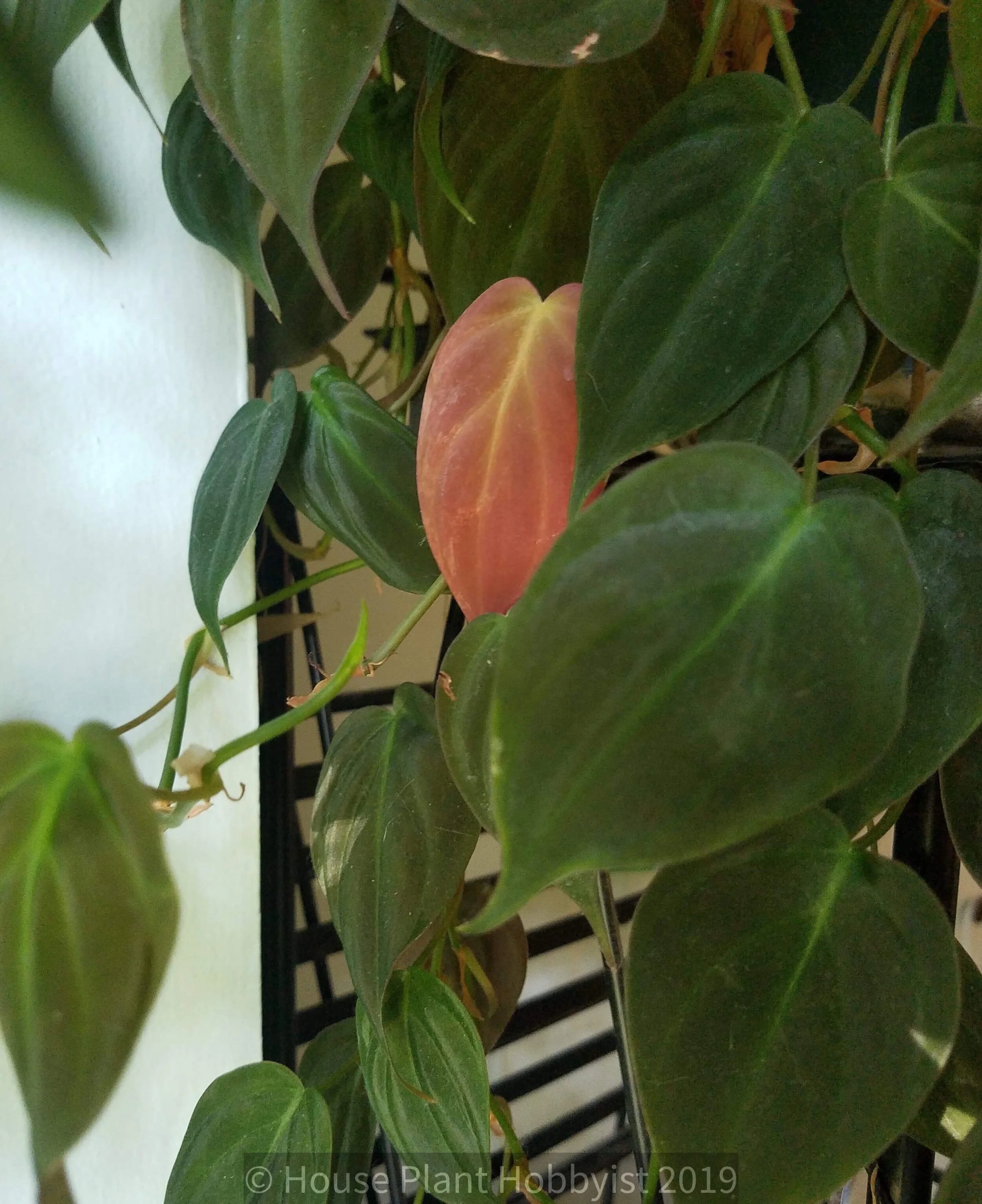Philodendron "Micans" Care
When it comes to common names these lovely plants have quite a few — the most common are Micans and Velvet Leaf Philodendron, but just wait until you see the botanical name. The Philodendron hederaceum var. hederaceum (nope, we did not accidentally add “hederaceum” twice) may seem a redundant name, but whatever name you use, this is a gorgeous plant.
The leaves unfurl as a chartreuse color edged in pink and then become a velvety, iridescent deep green with a deep purple-red color on the back side that looks like shades of rusty orange when the light shines through. You can grow these as a trailing vine or you can train them to grow up a moss pole, but either way they will look amazing!
Light
These like bright indirect light, as direct sunshine can burn the leaves, so if you have a southern facing window make sure to have a sheer curtain or keep the plant farther from the window. Philodendrons are known to tolerate lower light levels, but tolerate does not mean thrive, so if you want a really leggy plant with small leaves, then low light works just fine. The best thing to do with plants is to mimic their native growing habits, which in this case means bright indirect light.
Water
Water these when the top couple inches of the potting medium is dry, but never let them sit in water as that will lead to root rot. I generally don’t water mine until the potting medium has just dried out completely, but hasn’t been fully dry for an extended period of time. Make sure to water them fully so that water is running out of the drainage holes. During the colder months make sure to water a little less often, which basically means definitely let the potting medium dry out fully before watering again.
Potting
A fast draining, but good quality potting medium is the best way to go. I generally just make my own using equal parts worm castings, orchid bark, perlite, and horticultural charcoal and sphagnum moss if I have any of either on hand. When you re-pot yours, make sure that the size of the pot isn’t too much larger than the root ball, as this can lead to the roots being exposed to too much moisture. Always go up a size so that there is about an inch or so of room between the roots and the inside of the new pot.
Fertilizer
Feed these a mild dose of a good quality, rounded 20-20-20 fertilizer during their growing period, and sparingly during the colder months when they aren’t growing as actively.
If you’ve got more questions or want to swap tips and tricks about Philodendron “Micans” or any other plants, check out HPH on Facebook to join our global community of plant lovers!






